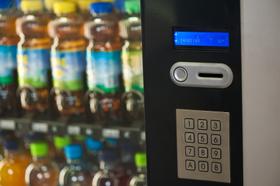Today's global economy is highly dependent on technology and engineering, and the countries that can produce the most knowledgeable workforce in these areas will surely be the free world's future leaders. However, test scores have indicated that schools across the United States are far from prepared to embrace the needs of tomorrow by training today's workforce. To answer the call, some schools are revamping their educational priorities to educate a new generation of leaders with highly desired innovation and problem-solving skills. STEM schools are one of the latest educational trends to sweep the country, and this article looks closely at what these schools do to train the next generation of workers and leaders in the United States.
What is STEM?
STEM stands for science, technology, engineering, and math, which are the focus subjects in STEM schools today. According to the National Governor's Association, the new global economy requires states to prepare a workforce with the skills and knowledge necessary to compete on a much broader spectrum. The key to developing workers with the innovation, creativity, self-reliance, and problem-solving skills necessary for the modern workforce is a focus on the STEM competencies from when students enter kindergarten until they graduate from high school.
Despite the need for STEM competencies in school today, many of the districts across the country are not yet making the grade. The NGA report cites that results from the 2003 Third International Mathematics and Science Study show that 8th and 12th-grade students in this country do not have the necessary skills to compete adequately in the global economy. In addition, the study indicated that there were great disparities in skill levels between socio-economic, ethnic, and gender status. To have a successful STEM education system, the NGA recommends:
- High school graduates must be prepared for post-secondary work and education. Nearly 30 percent of all high school graduates are placed into remedial courses in college or come into the workforce without the necessary math and technology skills to succeed in the professional world.
- STEM courses must be aligned throughout the K-12 years so requirements are met each year a student progresses through school. Training and education must also align with the expectations of colleges and the workforce. Today, many students are participating in irrelevant coursework that does not adequately prepare them for post-secondary education or a professional career.
- Teachers in STEM programs must be sufficiently trained to educate students in these fundamentals. Training must be ongoing, with preparation and professional development opportunities throughout the educator's career. In addition, the number of STEM teachers needs to increase to accommodate students through recruitment strategies and financial incentives.
Some schools across the country are already touting themselves as STEM schools, encompassing these three characteristics as they strive to educate students appropriately for the 21st century.
This video explains STEM in K-12 schools.
Virginia School Offers Robotics Course through STEM Curriculum
Bedford County high schools in Virginia have leaped aboard the STEM bandwagon, and one of the schools is even offering a robotics class to students interested in this area. The robotics course will be available at Bedford Science and Technology Center. It will be the first of a two-year course sequence that hopes to engage students in the real-world application of science and technology, according to a report at Virginia's Region 2000 Technology Council.
The robotics course promises a sound introduction to basic computer programming, motor control, electronics, and feedback systems. During the class, students will learn how to create a microcontroller for robotic manipulation. Currently, the school is searching for a qualified robotics instructor to oversee the course.
STEM Comes to Maryland
Schools across Maryland are also providing STEM curriculum to students, as the state envisions becoming one of the top STEM educators in the country. According to the Maryland State Department of Education website, STEM is the "future of our students." Numerous state schools are receiving STEM grants to bring the specific curriculum into the classroom. The website also offers a list and contact information for all of the schools and school districts in Maryland that are committed to offering STEM educational opportunities to their students.
This video offers an explanation of STEM in K-12 schools.
Washington D.C. Brings STEM to Classrooms
The District of Columbia Public School District also values STEM education, offering many options throughout its system. According to the district website, STEM combines disciplines like science, math, and technology with the arts and humanities for a well-rounded educational experience. The website lists some of the features of their STEM schools, including:
- Wide use of a range of technologies in the classrooms by both students and teachers
- Real-world connections between science and other learning disciplines
- Engineering and design concepts taught into the principles of everyday life
- Projects that incorporate STEM concepts into core subjects
- Lineation of STEM teaching throughout all grades
STEM schools in the Columbia Public School District currently include two PS-5 schools and four PS-8 schools. The schools are designed to help students succeed in their academic careers and move into colleges and rewarding careers after high school.
While STEM schools are gaining popularity nationwide, funding for the project is still relatively scarce. According to the STEM School website, private investors and state programs are barely scraping enough money together to advance the STEM program. However, as the value of STEM schools continues to become apparent, the hope is that funding will eventually be easier to come by.
Questions? Contact us on Facebook. @publicschoolreview










































































